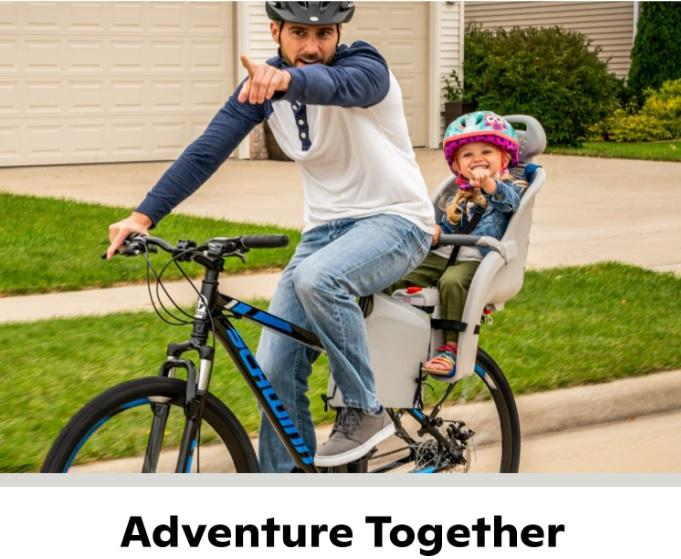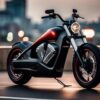
Buyer’s Guide for Baby Seat Carrier for Bikes
If you’re considering purchasing a baby seat carrier for bikes, here’s a comprehensive buyer’s guide to help you make an informed decision:
Table of Contents
- Safety: Safety should be the top priority when choosing a baby seat for biking. Look for seats that meet recognized safety standards, such as ASTM or EN standards. Check for features like a secure harness system, adjustable straps, and a sturdy frame to ensure the safety and stability of your child during the ride.
- Age and Weight Limit: Consider the age and weight limit of the baby seat. Different seats have specific age and weight recommendations, so choose one that is appropriate for your child’s age and size. Ensure that the seat can accommodate your child comfortably and safely within the specified limits.
- Mounting System: Evaluate the mounting system of the baby seat. There are generally two types: rear-mounted seats and front-mounted seats. Rear-mounted seats attach to the rear rack of the bike, while front-mounted seats attach to the handlebars or frame. Choose a mounting system that suits your preference and bike type.
- Compatibility: Ensure that the baby seat is compatible with your bike. Check the seat’s compatibility with different bike frame sizes, tube shapes, and handlebar configurations. Some seats come with adjustable mounting brackets or adapters to fit various bike models, providing versatility and ease of installation.
- Comfort: Consider the comfort features of the baby seat. Look for seats with padded seating areas, adjustable footrests, and backrests to provide a comfortable and supportive ride for your child. Some seats may also have additional features like reclining positions or suspension systems for added comfort.
- Harness System: Check the harness system of the baby seat. Look for seats with a secure and adjustable five-point harness, which ensures that your child is properly strapped in and prevents them from leaning or wiggling during the ride. The harness should be easy to use and have a quick-release mechanism for convenience.
- Protection from Elements: Evaluate the level of protection the baby seat provides from the elements. Look for seats with features like a detachable or retractable sunshade, rain cover, or windscreen to shield your child from sun, rain, or wind during the ride. This enhances their comfort and protects them from the elements.
- Ease of Installation and Removal: Consider the ease of installation and removal of the baby seat. Look for seats that have a simple and straightforward installation process, with clear instructions and minimal tools required. Quick-release mechanisms or snap-on attachments can make it easier to attach and remove the seat as needed.
- Storage and Portability: Assess the storage and portability features of the baby seat. Look for seats that are lightweight and compact, making them easier to transport when not in use. Some seats may have foldable or collapsible designs for convenient storage and transportation.
- Brand Reputation and Reviews: Research the reputation of the brand and read user reviews of the baby seat you’re considering. Look for feedback from other parents regarding the seat’s performance, durability, and overall satisfaction. Reliable brands with positive customer reviews can provide assurance of a quality product.
- Price and Value: Set a budget for your baby seat purchase. Compare prices from different retailers or online platforms while considering the features, safety standards, and durability of the seat. Balance affordability with the desired features and quality to ensure a good value for your investment.
- Legal Considerations: Familiarize yourself with local laws and regulations regarding biking with a child. Understand the age requirements, helmet usage, and any specific guidelines for using baby seats while biking in your region. Ensure compliance with all applicable laws to prioritize your child’s safety.
By considering these factors, you can select a Baby Seat Carrier for Bikes that offers safety, comfort, and convenience for both you and your child. Always prioritize safety by choosing a seat that meets recognized standards and provides a secure harness system.
Consider the age and weight limits to ensure a proper fit for your child. Evaluate the mounting system compatible with your bike, whether rear-mounted or front-mounted. Look for comfort features such as padded seating, adjustable footrests, and backrests.
A reliable harness system with a quick-release mechanism is essential for securing your child during the ride. Protection from elements like sun, rain, and wind can enhance your child’s comfort.
Opt for seats with detachable or retractable sunshades, rain covers, or windscreens. Easy installation and removal are crucial, so look for seats with simple attachment mechanisms and clear instructions.
Portability and storage options, such as lightweight and compact designs, are convenient when not in use. Consider reputable brands with positive customer reviews to ensure a quality product.
Compare prices while balancing affordability and desired features. Familiarize yourself with local biking laws and regulations to ensure compliance. By taking these factors into account, you can find the perfect baby seat for biking that provides safety, comfort, and peace of mind during your rides.
Additional Baby Seat Carrier for Bikes Reading:
Best Baby Seat Carrier For Bikes
For your child’s safety and comfort during your riding adventures, picking the best baby seat carrier for bikes is essential. To make the optimal decision, a number of things must be taken into account.
First, consider your child’s age and size. Some carriers are made for infants and toddlers, while others work better for somewhat older kids. To allow the seat to grow with your child, look for one with high backs and adjustable straps.
The placement of the seat is also crucial; while front-mounted chairs allow you to maintain a closer eye on your child, rear-mounted seats are typically safer and can support greater weights.
Third, take into account the safety features. A good bike seat will feature a strong harness, ideally a five-point harness, foot guards to shield the child’s feet from the wheels of the bike, and potentially even a roll bar to protect the child’s head.
Last but not least, comfort is essential. To ensure a comfortable ride, choose a seat that is well-cushioned and includes shock absorption. Remember to read reviews and conduct comprehensive research before choosing the finest bike seat carrier for your family’s needs from reputable brands like Thule and Hamax.
Best Baby Seat Carrier For Bikes
- Thule Yepp Mini Child Bike Seat – eBay – Amazon
- Peg Perego Orion Front Mount Child Seat – eBay – Amazon
- Thule Yepp Maxi Baby Bike Seat – eBay – Amazon
- Schwinn Child Carrier – eBay – Amazon
- Topeak Baby Seat II 26in Disc Rack Bicycle Baby Seat – eBay – Amazon
- Thule RideAlong Lite – eBay – Amazon
- Hamax Caress Rear Child Bike Seat 414212 – eBay – Amazon
- Do Little Front-Mounted Kids Bike Seat for Active Riding Original Front-Mounted Kids – eBay – Amazon
- Hamax – eBay – Amazon
- Ibert Bike Seat – eBay – Amazon
- Thule RideAlong Child Bike Seat – eBay – Amazon
- Weeride Bike Seat – eBay – Amazon
Best Front Mounted Child Bike Seat
To ensure your child’s comfort and safety, there are a number of things to take into account while selecting the best front-mounted child bike seat. The safety of everyone involved should come first and foremost.
To keep your child’s feet safe and secure, look for a seat with an adjustable footrest and a dependable and secure strap system, preferably a 5-point harness for maximum security.
Additionally, because different models have varied weight and age restrictions, it’s critical to take your child’s age and weight into account. Typically, smaller children, typically between the ages of 9 months and 3 years, are best suited for front-mounted chairs.
Other important factors include the seat’s style and comfort. Your child will be comfortable during rides if the seat is well-padded and has good back support.
For added comfort, think about a seat that has a recess for the child’s helmet. Front-mounted seat manufacturers with stellar reputations for balancing safety, comfort, and usability include Thule, iBert, and WeeRide. Remember that a child’s safety depends on correct installation, so pay close attention to the manufacturer’s guidelines.
Best Child Bike Seat – Baby Seat Carrier for Bikes
Choosing the best child bike seat largely depends on your child’s age, weight, and the type of biking you plan to do. Safety should always be the top priority.
Seek out a bike seat with a sturdy, reliable harness – a 5-point harness is generally the most secure. Footrests and guards can prevent little feet from coming into contact with the wheels.
The age and weight of your child are also important factors when choosing a Baby Seat Carrier for Bikes. Front-mounted seats are generally designed for younger children, usually between 9 months to 3 years old, while rear-mounted seats can typically accommodate older children, up to about 6 years old.
Make sure to consider the weight limit for each seat, as exceeding this limit can compromise safety. For comfort and convenience, consider a seat with padding, adjustable features, and even a recline function for longer rides.
Brands like Thule, Hamax, and Yepp are highly reputable and known for their combination of safety, comfort, and durability. As always, ensure the seat is correctly installed according to the manufacturer’s instructions and that your child is always wearing a properly fitted helmet when riding.
Best Child Seat for Mountain Bike – Baby Seat Carrier for Bikes
Mountain biking presents unique challenges when it comes to transporting children. It’s vital to select a seat that offers exceptional safety features, durability, and comfort for off-road terrains.
The best child seat for a mountain bike should ideally be rear-mounted, given the extra stability and security it offers over rough trails. A high backrest and a 5-point safety harness are essential to keep your child secure during bumpy rides.
Foot straps and spoke guards can prevent small feet and hands from being injured. Suspension is another key feature; it absorbs shocks and vibrations, ensuring a smoother, more comfortable ride for your little one.
Also, remember to consider weight and age limits. Brands such as Thule and Hamax offer bike seats specifically designed for rigorous activities like mountain biking. It is crucial, however, that the seat is fitted correctly to your bike, and your child is always wearing a helmet that fits appropriately.
I would advise riders to also equip the child with additional protective gear like elbow and knee pads for added safety while mountain biking.
Baby Bike Seat 6 Months – Baby Seat Carrier for Bikes
Safety should always come first when it comes to riding a bicycle with a baby as young as 6 months old. Before utilizing a Baby Seat Carrier for Bikes, it is generally advised to wait until a child can sit up unassisted and fully support their head (often around 9-12 months).
However, if your 6-month-old can sit up without assistance and you believe they are ready, think about a baby bike seat with top-notch safety features and unrivaled comfort. At this stage, front-mounted seats are preferable because they allow for better viewing and engagement with the child.
In order to accommodate growing legs, look for a seat with a strong 5-point harness, a high backrest, and adjustable footrests. In order to cushion shocks and provide your baby with a comfortable ride, the seat should also include padding.
Two examples of premium seats with strong safety features are the Thule Yepp Mini and Hamax Caress. It is crucial to remember that every child, regardless of age, must wear a properly fitted helmet while seated in a bike seat and that the child’s weight must not exceed the seat’s weight restriction. Before taking a child who is as young as six months old for a bicycle ride, always check with a doctor.
Riding Bike with Baby in Carrier – Baby Seat Carrier for Bikes
A wonderful opportunity to explore the outdoors and spend quality time with your child, riding a bike with a baby in a carrier may be a really pleasurable experience. However, it’s imperative to put safety and comfort first.
Start by picking the appropriate Baby Seat Carrier for Bikes. The most popular choices, each with specific benefits, are bike trailers, rear-mounted seats, and front-mounted seats. A front-mounted seat enables closer contact and better visibility while dealing with smaller infants who can hold their heads.
Rear-mounted seats or trailers provide greater space and stability for older kids. Before each ride, make sure the carrier is placed and fastened correctly. Never forget to buckle your child’s helmet, even for short rides, and always secure the seat belt using the provided harness.
To maintain a snug fit as your baby develops, adjust the footrests and the harness. When cycling around turns or uneven terrain, slow down and be extra cautious. Your baby will be safer if your movements are more consistent and predictable.
Check local laws as some places have limitations on children riding bicycles. Bike rides can be an enjoyable, healthy exercise for you and your baby if you take these measures.
Baby Bike Seat Front – Baby Seat Carrier for Bikes
Selecting the ideal front-mounted baby seat carrier for bikes involves several key factors, all of which contribute to a safer and more comfortable ride for both parent and child. One of the primary benefits of a front-mounted seat is the ability it provides for close interaction and monitoring, as your baby is in your direct line of sight.
This position also enhances the child’s view, making the ride more enjoyable for them. When choosing a front-mounted seat, ensure that it’s designed with a child-safe harness system, footrests, and ideally a handlebar for the child to hold onto.
Size and weight capacity are essential to consider; the seat should accommodate your child’s growth while remaining firmly secured on the bike. It’s crucial to check the compatibility with your bike model and frame, as not all seats fit all bicycles.
Installation should be straightforward, with a quick-release mechanism that allows you to detach the seat when not in use. Ultimately, the seat you select should adhere to safety standards and undergo rigorous testing for durability and safety. Always pair the seat use with a fitting baby helmet and get ready for memorable cycling adventures.
Baby Bike Seat Age – Baby Seat Carrier for Bikes
For a child’s safety and comfort, it’s critical to know when to start using a baby bike seat. The minimum age for a baby to ride in a child seat installed on a bicycle is often between 9 and 12 months, however this much depends on the development of the particular child.
They often possess the neck strength and stability necessary to support their heads up while wearing a light helmet at this age. It’s critical to keep in mind that these are just suggestions and that each child’s developmental milestones may differ. Some kids might be a little bit more or a little less prepared.
Don’t rush the process, though; before thinking about a bike seat, make sure your youngster can sit independently and safely. Keep in mind that the model of the child bike seat often determines the maximum age or weight limit.
Some can hold kids who weigh up to 48 pounds (22 kilograms) or are 6 years old. For the minimum and maximum age and weight restrictions, always refer to the manufacturer’s recommendations and guidelines. Keep in mind that safety should always come first.
Rear Mounted Child Bike Seat – Baby Seat Carrier for Bikes
Parents frequently choose rear-mounted baby seat carrier for bikes because they feel that they are more stable and safe. These seats provide your child with a safe and comfortable ride because they are positioned behind the rider. Depending on the model, they can often hold children from about 9 months to 5 or even 6 years old, with a weight restriction that typically runs from 40 to 70 pounds.
A high backrest and side guards are frequently included in the design of the rear-mounted seat to give necessary support and containment, especially if your youngster nods off during the journey. A secure fit is offered at every stage thanks to the adjustable footrests and safety harnesses that come with many models.
Additionally, a quick-release bracket is typically included with rear-mounted seats, making installation and removal simple. It’s crucial to keep in mind that your child’s weight in the back may affect how stable your bike is, especially when getting on or off.
Therefore, it could take some practice to get used to the extra weight. Always check that your child is wearing the proper helmet and that the car seat is installed correctly before starting your trip.
Rear Bike Seat for Older Child – Baby Seat Carrier for Bikes
As children grow older and heavier, selecting the right bike seat becomes a matter of comfort and safety. For older children, typically between the ages of 5 and 9, a rear bike seat remains a viable option, but the design and features should be adjusted to their growing size and increasing independence.
Seats for older children tend to have higher weight limits, often accommodating up to 70 pounds or more. These seats usually provide more legroom and adjustable footrests to account for longer limbs. A critical factor to consider is the seat’s sturdiness; the construction material should be robust enough to safely bear the child’s weight.
Furthermore, older children might appreciate features that provide a more interactive and enjoyable ride, such as handlebars they can hold onto. As always, a good safety harness is crucial, even if your child is older and steadier. Some models even offer a reclining feature, allowing your child to lean back comfortably, which can be particularly useful for longer rides.
Do remember that as the child’s weight increases, it will affect the bicycle’s center of gravity and handling. Therefore, it is essential to practice riding with the seat and your child in a safe environment before hitting the road.
Best Rear Mounted Child Bike Seat – Baby Seat Carrier for Bikes
Choosing the best rear-mounted baby seat carrier for bikes largely depends on your child’s age, the type of bicycle you ride, and the nature of your cycling trips. The quintessential feature to look for is, of course, safety, which encompasses a sturdy harness system, footrests, and ideally, a spoke guard to protect small feet. Next, comfort is paramount: an ergonomic design, padded seating, and adjustable footrests can contribute to a more enjoyable ride for your child.
One of the best choices on the market today is the Thule Yepp Maxi, known for its combination of safety, comfort, and easy installation. It’s designed for children from 9 months to 6 years old, or up to 48.5 lbs. Its unique shock-absorbing material and adjustable 5-point harness cater to growing children, ensuring both comfort and security. The Yepp Maxi also stands out for its intuitive design, including a childproof safety buckle, water-repellent material for easy cleaning, and a built-in reflector for better visibility.
However, when selecting the best rear-mounted baby seat carrier for bikes, always consider its compatibility with your bicycle. Not all seats fit all bikes, so check manufacturer specifications regarding compatible bicycle types and sizes. Moreover, make sure to regularly check and maintain all the seat’s components, because, after all, your child’s safety is riding on it.
Child Bike Seat for 6-Year-Old – Baby Seat Carrier for Bikes
Children start to become more aware of and interested in their surroundings around the age of six, which makes riding a bike a thrilling adventure for them. The three most important factors to consider when selecting a bike seat for a six-year-old are comfort, safety, and size. In order to accommodate growing legs, you should search for a bike seat with a larger weight limit, adjustable footrests, and a safety harness system.
The Hamax Caress Rear Baby Seat Carrier for Bikes is a standout option; it can accommodate children up to 48.5 lbs (about 22 kg) and has adjustable footrests that may be set at various heights. As a result, your child can grow together with the bike seat, ensuring a comfortable ride for longer. Additionally, the seat has a reclining capability for times when your kid would like to doze off or take a nap while riding.
The Hamax Caress has several safety features, including a double buckle system that is challenging for kids to open, guards to avoid contact with the bike wheel and an integrated reflector and attaching point for a safety light for increased visibility. It is simple to mount and works with the majority of bike frames.
Never forget, though, that even the most cutting-edge bike seat cannot take the place of a good child’s helmet. A non-negotiable part of biking with kids is making sure your child always wears a properly fitted helmet. Safety should always come first.
Baby Seat Carrier For Bikes Walmart
Baby Seat Carrier For Bikes Amazon
Manufacturers Resources:
- Thule Product Guides
- Peg Perego Orion Recalls
- Topeak Buyers Guides
- Hamax User Manuals
- iBert Manuals & Videos
FAQs
What age can a baby go in a bike carrier?
Babies can typically start using a baby seat carrier for bikes around 9 to 12 months old when they can sit up unassisted and support their heads with a helmet. However, every child develops at their own pace, so it’s essential to consider their individual readiness and consult with a pediatrician if needed. Always prioritize safety when introducing your baby to a bike carrier.
Can you ride a bike with a baby in a baby carrier?
Yes, it is possible to ride a bike with a baby in a baby carrier, specifically designed for biking. These baby seat carrier for bikes provide a secure and comfortable seat for your baby, allowing you to enjoy family bike rides together. However, it’s crucial to ensure that the baby seat carrier for bikes is properly installed, the baby is securely strapped in with a harness, and all safety guidelines are followed. Always prioritize the safety and well-being of your baby while riding a bike.
Can I put a baby seat on my bike?
You can mount a baby seat carrier for bikes on your bike, yes. You can take your child during bike journeys in a secure and comfortable manner using baby seats made for bicycles. Depending on your taste and the compatibility of your bike, numerous types of infant seats, such as front-mounted seats or rear-mounted seats, are available. It’s crucial to pick a bike seat that complies with safety regulations, mount it correctly, and make sure your child is safely restrained with a harness. Always emphasize your baby’s safety when riding and adhere to the manufacturer’s guidelines.
What is the safest way to carry a baby on a bike?
The safest way to carry a baby on a bike is by using a properly designed and installed baby seat carrier for bikes. Follow these guidelines for a safe ride:
1. Choose a reliable and age-appropriate baby seat that meets safety standards.
2. Install the seat securely according to the manufacturer’s instructions.
3. Use a helmet that fits your baby properly and meets safety standards.
4. Ensure your baby is securely strapped in with the seat’s harness system.
5. Ride on smooth and well-maintained surfaces, avoiding busy or hazardous roads.
6. Maintain a steady and controlled speed, especially when turning or braking.
7. Stay vigilant and be aware of your surroundings, anticipating any potential risks.
8. Avoid sudden movements or actions that could startle or endanger your baby.
9. Ride defensively and follow traffic rules, signaling your intentions to other road users.
10. Regularly inspect the seat, straps, and mounting to ensure they are in good condition.
Always prioritize your baby’s safety, and if you have any concerns or questions, consult with a bike safety expert or your pediatrician.
Can a 7-month-old go in a bike seat?
Yes, a 7-month-old can ride in a baby seat carrier for bikes, but only if the seat is appropriate for their age and weight. Look for a bike seat that is specifically made for infants and that has adequate support and safety features. Consult your pediatrician as well to ensure your infant is developmentally and physically capable of sitting properly in a bike seat. Always prioritize your baby’s safety and adhere to the manufacturer’s age and weight limits.
Can a 6-month-old ride in a bike seat?
Although some baby seat carrier for bikes are made for babies as young as six months old, it’s vital to put your baby’s safety and physical development first. Make sure a 6-month-old has adequate head and neck control and can sit up with support before putting them in a bike seat. Additionally, pick a bike seat with a tight strap system and enough padding for comfort that is specially made for young infants. Always check with your pediatrician to see if your child is physically and developmentally prepared to ride in a bike seat.
Can a 1-year-old go in a bike seat?
Yes, normally a 1-year-old can ride in a bike seat. Most kids have enough head and neck control at this age to sit upright and support themselves in a bike seat. It’s crucial to pick a bike seat with the right support, such as a safety harness system and cozy padding. Make sure the seat is adjustable and the right size for your child’s height and weight. As usual, put safety first by adhering to the manufacturer’s instructions and seeking advice from your doctor before taking your 1-year-old along in a bike seat.
What is safer a child bike seat or a trailer?
Although each has its own issues, child trailers, and bike seats can both be secure ways to transport kids.
The child can sit directly on the bicycle thanks to the child’s bike seats, which fasten to it either in the front or the back. They allow for greater interaction between parent and child and allow the parent to closely monitor the child. However, especially while riding on uneven terrain, it can impact the bike’s balance and handling.
The child can comfortably sit inside a bike trailer, which is a separate compartment attached to the back of the bicycle. Due to their reduced height and distinct wheel design, trailers provide the youngster with additional stability and protection. Additionally, they have the capacity to transport more children or freight. They may, however, need extra room when riding on curvy routes or highways because they are wider.
The decision between a baby seat carrier for bikes and a trailer is influenced by a variety of elements, including personal preference, the child’s age and size, the terrain, and the planned use. Prioritizing safety means choosing a sturdy, correctly placed seat or trailer, putting on the right safety gear, and obeying local laws. Making the most secure decision for your particular circumstance can also benefit from seeking advice from a pediatrician or seasoned riders.







